22 Fruits High in Potassium - A Ranking from Highest to Lowest
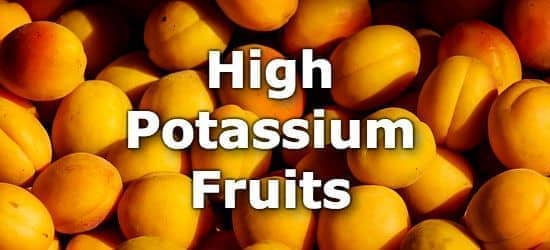
Potassium is an essential nutrient used to maintain fluid and electrolyte balance in the body.
A deficiency in potassium causes fatigue, irritability, and hypertension (high blood pressure).
Overdose of potassium from natural sources is nearly impossible, however, it is possible to consume too much potassium via potassium salts which can lead to nausea, vomiting, and even cardiac arrest. Potassium from fruits, like the ones listed below, are considered safe and healthy.
For those with chronic kidney disease (CKD) who need to lower their potassium, this list can serve as a guide on what fruits to eat or avoid depending on your own restrictions. Most people with CKD should not consume more than 200mg of potassium per serving, or 2000mg per day. This article can only be used as a guide, but the amount of potassium you eat each day should be set by your care provider. See also our list of low potassium foods for more ideas.
Fruits high in potassium include avocados, guavas, kiwifruit, cantaloupe, bananas, pomegranate, apricots, cherries, and oranges. The current daily value (DV) for potassium is 4700mg, recently increased from 3500mg by the FDA.
Below is a list of fruits high in potassium, for more, see the extended lists of potassium rich fruits, dried fruits high in potassium, and articles on high potassium foods and high potassium vegetables.
You can also use the nutrient ranking tool to sort over 100 high potassium fruits.
High Potassium Fruits List
 1 Avocados
1 Avocados| Potassium per Avocado | Potassium per 100g | Potassium per 200 Calories |
|---|---|---|
| 975mg (21% DV) | 485mg (10% DV) | 606mg (13% DV) |
 2 Guavas
2 Guavas| Potassium per Cup | Potassium per 100g | Potassium per 200 Calories |
|---|---|---|
| 688mg (15% DV) | 417mg (9% DV) | 1226mg (26% DV) |
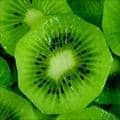 3 Kiwifruit
3 Kiwifruit| Potassium per Cup | Potassium per 100g | Potassium per 200 Calories |
|---|---|---|
| 562mg (12% DV) | 312mg (7% DV) | 1023mg (22% DV) |
 4 Bananas
4 Bananas| Potassium per Cup Sliced | Potassium per 100g | Potassium per 200 Calories |
|---|---|---|
| 537mg (11% DV) | 358mg (8% DV) | 804mg (17% DV) |
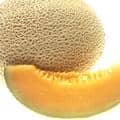 5 Cantaloupe
5 Cantaloupe| Potassium per Cup | Potassium per 100g | Potassium per 200 Calories |
|---|---|---|
| 473mg (10% DV) | 267mg (6% DV) | 1571mg (33% DV) |
 6 Pomegranate
6 Pomegranate| Potassium per Cup | Potassium per 100g | Potassium per 200 Calories |
|---|---|---|
| 411mg (9% DV) | 236mg (5% DV) | 569mg (12% DV) |
 7 Apricots
7 Apricots| Potassium per Cup | Potassium per 100g | Potassium per 200 Calories |
|---|---|---|
| 401mg (9% DV) | 259mg (6% DV) | 1079mg (23% DV) |
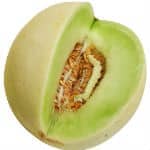 8 Honeydew Melon
8 Honeydew Melon| Potassium per Cup | Potassium per 100g | Potassium per 200 Calories |
|---|---|---|
| 388mg (8% DV) | 228mg (5% DV) | 1267mg (27% DV) |
 9 Cherries
9 Cherries| Potassium per Cup | Potassium per 100g | Potassium per 200 Calories |
|---|---|---|
| 342mg (7% DV) | 222mg (5% DV) | 705mg (15% DV) |
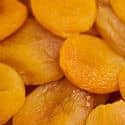 10 Dried Apricots
10 Dried Apricots| Potassium per oz(Handful) | Potassium per 100g | Potassium per 200 Calories |
|---|---|---|
| 330mg (7% DV) | 1162mg (25% DV) | 964mg (21% DV) |
More Dried Fruit High in Potassium
- 6% DV per oz of prunes
- 5% DV per oz of raisins
- 4% DV in 1 medjool date
See the section of dried fruits high in potassium by a 1 cup serving size.
 11 Oranges
11 Oranges| Potassium per Cup | Potassium per 100g | Potassium per 200 Calories |
|---|---|---|
| 326mg (7% DV) | 181mg (4% DV) | 770mg (16% DV) |
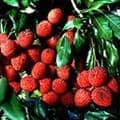 12 Litchis (Lychees)
12 Litchis (Lychees)| Potassium per Cup | Potassium per 100g | Potassium per 200 Calories |
|---|---|---|
| 325mg (7% DV) | 171mg (4% DV) | 518mg (11% DV) |
 13 Tangerines
13 Tangerines| Potassium per Cup | Potassium per 100g | Potassium per 200 Calories |
|---|---|---|
| 324mg (7% DV) | 166mg (4% DV) | 626mg (13% DV) |
 14 Grapefruit
14 Grapefruit| Potassium per Cup | Potassium per 100g | Potassium per 200 Calories |
|---|---|---|
| 320mg (7% DV) | 139mg (3% DV) | 869mg (18% DV) |
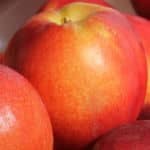 15 Nectarines
15 Nectarines| Potassium per Cup | Potassium per 100g | Potassium per 200 Calories |
|---|---|---|
| 287mg (6% DV) | 201mg (4% DV) | 914mg (19% DV) |
 16 Mangos
16 Mangos| Potassium per Cup | Potassium per 100g | Potassium per 200 Calories |
|---|---|---|
| 277mg (6% DV) | 168mg (4% DV) | 560mg (12% DV) |
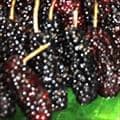 17 Mulberries
17 Mulberries| Potassium per Cup | Potassium per 100g | Potassium per 200 Calories |
|---|---|---|
| 272mg (6% DV) | 194mg (4% DV) | 902mg (19% DV) |
 18 Persimmon
18 Persimmon| Potassium per Fruit | Potassium per 100g | Potassium per 200 Calories |
|---|---|---|
| 270mg (6% DV) | 161mg (3% DV) | 460mg (10% DV) |
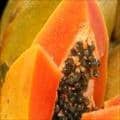 19 Papaya
19 Papaya| Potassium per Cup | Potassium per 100g | Potassium per 200 Calories |
|---|---|---|
| 264mg (6% DV) | 182mg (4% DV) | 847mg (18% DV) |
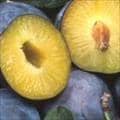 20 Plums
20 Plums| Potassium per Cup | Potassium per 100g | Potassium per 200 Calories |
|---|---|---|
| 259mg (6% DV) | 157mg (3% DV) | 683mg (15% DV) |
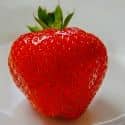 21 Strawberries
21 Strawberries| Potassium per Cup | Potassium per 100g | Potassium per 200 Calories |
|---|---|---|
| 254mg (5% DV) | 153mg (3% DV) | 956mg (20% DV) |
 22 Blackberries
22 Blackberries| Potassium per Cup | Potassium per 100g | Potassium per 200 Calories |
|---|---|---|
| 233mg (5% DV) | 162mg (3% DV) | 753mg (16% DV) |
Less Common Potassium Rich Fruits
| Food | Serving | Potassium |
|---|---|---|
| 1 Passion Fruit (Granadilla) | per cup | 17% DV (821mg) |
| 2 Mamey Sapote | per cup | 17% DV (795mg) |
| 3 Jackfruit | per cup | 16% DV (739mg) |
| 4 Soursop | per cup pulp | 13% DV (626mg) |
| 5 Sapodilla (Chiku) | per cup pulp | 10% DV (465mg) |
| 6 Cherimoya | per cup (pieces) | 10% DV (459mg) |
| 7 Elderberries | per cup | 9% DV (406mg) |
| 8 Loquats | per cup | 8% DV (396mg) |
| 9 Black Currants | per cup | 8% DV (361mg) |
| 10 Kiwano (Horned Melon) | per cup | 6% DV (287mg) |
Dried Fruits High in Potassium
| Food | Serving | Potassium |
|---|---|---|
| 1 Dried Apricots | per cup | 32% DV (1511mg) |
| 2 Dried Bananas | per cup | 32% DV (1491mg) |
| 3 Prunes (Dried Plums) | per cup | 30% DV (1397mg) |
| 4 Golden Raisins | per cup | 26% DV (1231mg) |
| 5 Zante Currants | per cup | 24% DV (1119mg) |
| 6 Dried Apples | per cup | 8% DV (387mg) |
| 7 Medjool Dates | per date | 4% DV (167mg) |
| 8 Deglet Noor Dates | in 3 dates | 3% DV (138mg) |
How much potassium do you need each day?
The daily value (%DV) for Potassium is 4700mg and is a general target intended for most people. Adquate intakes (%AI) take age and gender into account and range from 2000mg - 3400mg for most people.
| Life Stage | AI | Infants |
|---|---|
| 0-6 months old | 400mg |
| 7-12 months old | 860mg |
| Children | |
| 1-3 years old | 2000mg |
| 4-8 years old | 2300mg |
| Males | |
| 9-13 years old | 2500mg |
| 14-18 years old | 3000mg |
| 19+ years old | 3400mg |
| Females | |
| 9-13 years old | 2300mg |
| 14-18 years old | 2300mg |
| 19+ years old | 2600mg |
| Pregnancy | |
| 14-18 years old | 2600mg |
| 19+ years old | 2900mg |
| Lactation | |
| 14-18 years old | 2500mg |
| 19-30 years old | 2800mg |
About the Data
Data for the curated food lists comes from the USDA Food Data Central Repository.
You can check our data against the USDA by clicking the (Source) link at the bottom of each food listing.
Note: When checking data please be sure the serving sizes are the same. In the rare case you find any difference, please contact us and we will fix it right away.
About Nutrient Targets
Setting targets can provide a guide to healthy eating.
Some of the most popular targets include:- Daily Value (%DV) - The daily value (%DV) is a general guideline for consumption that will prevent deficiency of a particular nutrient in most people. The %DV refers to the percentage of an amount that's found in a single serving of a food. It also accounts for absorption factors. It is set by the U.S. FDA.
- Recommended Dietary Allowance (%RDA) - The RDA sets an average daily dietary intake level that is sufficient to meet the nutrient requirements of nearly all (97.5%) healthy individuals. It's more specific than the daily value, and varies by age and gender. The RDA is set by the US National Institutes of Health.
- Reference Dietary Intake (%RDI) -The reference dietary intake is similar to the recommended daily allowance, but is specific to age and gender. The RDI for amino acids is set by the U.N. World Health Organization.
- Adequate Intake (%AI) - This value is primarily used in reference to omega-3 and omega-6 fats. The Adequate Intake is set by the U.S. Institute of Medicine. Because there is less evidence to determine the ideal targets for consumption of these nutrients, the specific amount is considered to be less reliable. Using the term Adequate Intake, rather than one of the other terms, helps to emphasize that the ideal intake of that particular nutrient has not yet been scientifically determined.
See the Guide to Recommended Daily Intakes for more information.
Want to set your own targets? Sign up for an account and set custom targets in the daily meal planner.From the Nutrient Ranking Tool
Use the ranking tool links below to select foods and create your own food list to share or print.
- Foods High in Potassium
- Foods Low in Potassium
- Vegetables High in Potassium
- Fruits High in Potassium
- Vegetarian Foods High in Potassium
- Nuts High in Potassium
- Grains High in Potassium
- Beans High in Potassium
- Dairy High in Potassium
- Breakfast Cereals High in Potassium
- Fast Foods High in Potassium
View more nutrients with the nutrient ranking tool, or see ratios with the nutrient ratio tool.
Related
Data Sources and References
Try the recipe nutrition calculator, or daily meal planner.
Create a free account to log and track foods.
